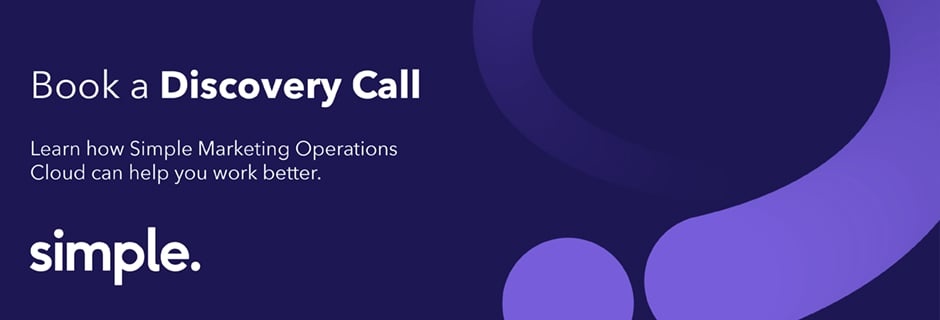All The Gear But No Idea
As we enter the new year of 2022, and leave the troubles of 2020 and 2021 behind us, it’s time for a fresh start. We are ready to kick all the gears into action and come back stronger than ever – but where do we start?
According to the Marketing Tech Landscape Supergraphic there were about 8,000 martech solutions available to CMOs in 2020, up by 13.6% from the year before. And, this is only pegged to continue to rise.
Those 8,000+ martech solutions currently span six categories, each with several sub-categories. To put that in perspective, even in the smallest of those sub-categories there are around 50 companies with very similar USPs for marketers to choose between. Several companies are listed in two or more sub-categories and madly enough, some don’t even know they’re on there. It’s a mess and those not experienced with the tech understandably don’t know where to start looking.
A report in 2020 collaboratively produced by BDO, WARC and the University of Bristol estimated that spending around the world on martech now sits at $121.5billion. And, this has been growing rapidly.
However, in 2019, Gartner’s Marketing Technology Survey reported that marketing leaders estimate they’re only using 58% of their martech tool’s potential. And, a report by ntegrity showed that 1 in 5 marketers described their martech stacks as a ‘convoluted mess,’
It paints a fairly bleak picture of the efficacy of martech, but it isn’t necessarily the fault of the martech companies.
The first thing to consider is picking the right technology for you (covered in this article)…once selected, the next step is ensuring an effective implementation – which you can read about here (9 tips for getting a better return on your martech investment).

So, as an agency or brand CMO, how do you know you’re picking a tech app or platform that can actually deliver on its promises?
Quality over quantity
On average enterprise companies are using more than 90 different martech apps and tools, which results in only one thing: companies are drowning in data and can’t see the wood for the trees. Or their customers for that matter.
Companies invest in martech solutions across various areas of business, whether that’s marketing, analytics, sales or your CRM. However, if all those different data modules are coming out and creating eight different definitions of the customer, how are you truly deriving accurate insights?
Brands must get clued up on the tech they’re paying for and identify which platforms and tools actually meet their objectives. You don’t need to use every available solution. If it’s costing you time, money and productivity – without adding any measurable value or insight – it’s time to ditch it.
Pick ’n’ Mix
But how do you choose what solutions to use? An easy route to go down is to look for bulk buys – adtech companies who offer DIY ad-buying package solutions where companies can pick and pay only for the tech and ad space they use. It’s a bundle offer but there’s no company that currently offers a complete one-size-fits-all martech/adtech solution so you will still need to tailor and add other solutions if you’re to create an effective marketing plan.
Does the tech integrate with current systems?
When mixing solutions you should make sure they can work together, but also with current systems you have in place.
It might seem obvious but you’d be surprised how many organisations don’t check this before signing a contract and telling their teams they need to implement X solution ASAP. If the tech app or platform isn’t compatible you could end up having to hire an extra team just to collect, analyse and act on any data that specific solution is collecting.
You thought it was going to cost $10k per month but actually, it’s now costing five times that in time and money. That productivity tool doesn’t feel so productive anymore, does it?
The proof of the pudding is in the eating
Are you paying for a solution that actually delivers on its promises? And are you using the data it delivers?
These tech solutions don’t come cheap so you must do your due diligence before parting with budget. Who are their customers and what is their feedback? What’s their reputation? (Going through a recommendation will always be a safer bet.) If it’s a new company then who’s running it – what’s their background and do they know what they’re talking about? And most importantly, do you really need what they’re selling?
People must come first
Before you go ahead, make sure your workforce needs the tech. Are you solving a problem they have or just creating one? Don’t get sucked in by a presentation with impressive numbers. Look for facts, functionality and practicality.
Research from Deloitte suggests the value derived from the always-on employee can be undermined by such negative factors as increased cognitive load and diminished employee performance and well-being.
So while there may be several good reasons to bring a tech solution on board, there could be a major reason why you shouldn’t. Too many tech solutions doesn’t just mean an overload of data that you can’t possibly use, it also means overloading your workforce, reducing productivity and increasing stress.
Streamline your tech stack and don’t skimp out. Choose fewer solutions that cost more, which turn valuable insights into real customers or increase productivity for your workforce. And make sure you have a plan in place so you’re making the most of the solutions you’re paying for.
As with any spring clean, if you haven’t used it for six months, bin it.
Also, when deciding between different technologies and your organisation’s needs, be sure to keep abreast of marketing trends which may influence your purchasing decision. Read here our 9 top martech trends for 2020 – all of which remain as pressing today as they did back then.
From planning and review to optimisation, Simple’s Marketing Operations Cloud helps marketers consolidate their martech stack, and drive value and cost-out for the organisation. To find out how reach out to one of our representatives.

